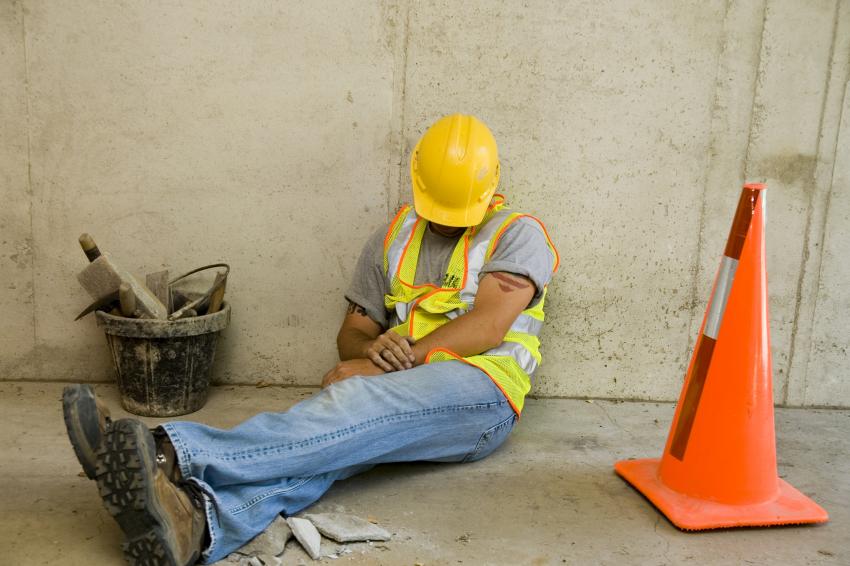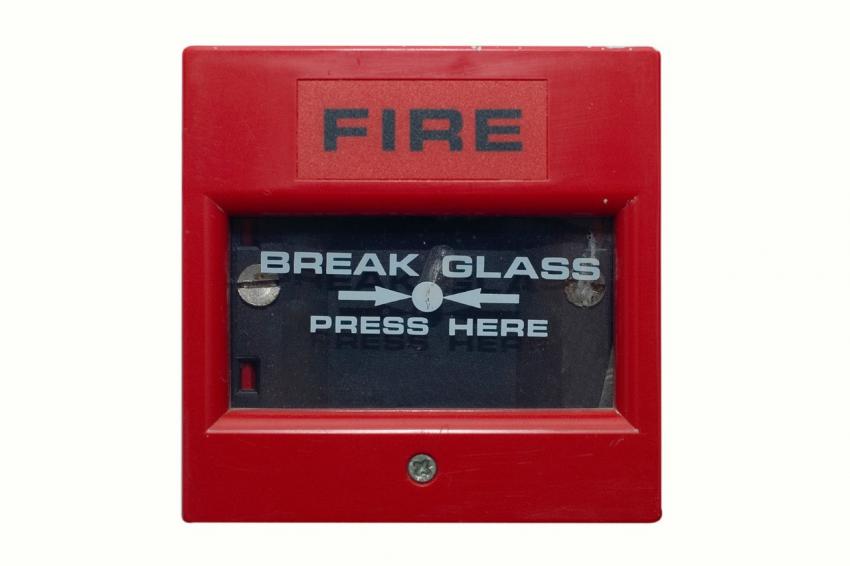How NOT to Test Fire Detectors
Guidance on Fire Detector Testing – Best Practice Exists for a Reason
Despite the best efforts of industry bodies such as the Fire Industry Association (FIA) shouting loudly about the need for best practice, there will always be a few lingering cases of poor practice.
When it comes to fire detectors, there really is no excuse not to test them. Perhaps the most common example of poor practice is simply not testing the detectors. The fact is, 100 percent of detectors on site should be tested over a 12-month period. This is to ensure that no matter where a fire might start, there is the assurance that the area is covered by a working detector.
Simply put: when you need a detector to work, you REALLY need it to work. Unlike a phone or a TV or any other entertainment device that can easily be replaced at any time (you might feel like you can’t live without a phone – but trust us, you can!), a detector cannot wait to be replaced. It needs to be replaced as soon as possible so that people are safe from the danger that fire brings. Life safety is not something to ‘forget to test’ or ‘do later’ – the process is active and ongoing, and it is important to get it right.
The Need for Competence
For those working within the fire detection and alarm maintenance sector, it is vital that the term ‘competence’ is understood in the right context. Under current fire safety legislation, only a ‘competent’ individual should carry out the work. This is defined as:
“(4) A person is to be regarded as competent for the purposes of paragraph (3)(b) where he has sufficient training and experience or knowledge and other qualities to enabl e him properly to implement the measures referred to in that paragraph.” (The Regulatory Reform (Fire Safety) Order 2005, England and Wales, Part 2, 13, 4.)
Let’s break this down. First the person needs to be properly trained and have the right level of experience. Experience is simple – it is simply gained over time on the job. Training helps to complement that; the FIA now offers vocational qualifications in fire detection alarm maintenance and installation, so it’s fairly simple to get that aspect ticked off.
Improper Testing
The second part of the legislation to pay attention to is the tools and equipment that the individual is using. There are so many anecdotes of improper testing equipment. Some individuals have been known to use a hairdryer or paint stripper heat guns to test a heat detector. Not only is this an example of improper use of equipment, it may even melt the detector and/or damage the sensors and components inside, rending the detector useless.
Another classic example of malpractice is when a screwdriver is used to short the thermistor to obtain a fire signal on the panel. This should be avoided at all costs as it simply changes the electrical signal and does not test the sensors in the detector, which, obviously, defeats the entire object of testing a detector that is designed to activate when the presence of heat/smoke is sensed.
The Need for Training
In the above cases, the individual would not be classed as ‘competent’ in the eyes of the law and the immediate remedy would be to obtain the correct equipment immediately and get some proper training, such as the FIA Advanced Maintainer Level 3 qualification. Training is the vital part, because even with the right equipment and tools, there is still the chance to use it in the wrong way. Standards such as BS 5839-1 cover this, so getting proper training on this standard is a step in the right direction.
Sometimes people want to do the right thing and get the right tools, but don’t have the right knowledge and experience to use them correctly. The advice is simple: read through the instructions that came with the equipment, and if all else fails, ask for technical support (either from the manufacturer of the product or call the FIA and they can help).
Testing equipment such as aerosol dispensers can also be problematic. This is an example of using the correct equipment, but using it incorrectly, and unfortunately, it can happen even when the intention to test correctly is there. Typically, aerosol cannisters designed for the testing of smoke detectors only require a small amount of spray – there is no need to use loads of the spray to test the detector, and that is where a lot of people can go wrong. It really is a case of reading the instructions that come with the testing equipment, or asking a more experienced colleague to teach less experienced individuals as to the proper use of aerosol cannister testing equipment.
If you haven’t had any training for a while, a refresher never hurts. Technology is changing and detectors are slowly becoming more complex to test due to the number of multi-sensor detectors on the market that detect different things such as heat and smoke at the same time.
Multi-Sensor Detectors are More Effective
Due to a recent study by the FIA in partnership with BRE and other industry bodies, it has been recently scientifically proven that multi-sensor detectors are more effective at reducing false alarms – and as a result over the next few months and years it is likely that many buildings will make the switch to multi-sensor detection methods.
Because of this move towards more sophisticated detectors, there is a need for more sophisticated testing equipment. It is important that this type of detector is tested correctly using the specialist equipment. Multi-sensor detectors have two or more sensors – e.g. heat and smoke – and they need to be tested simultaneously. The test equipment for this type of detector may be more specialised and be more expensive, but considering the precious need to demonstrate ‘competence’, a review of the equipment you have and the types of detectors you are testing may well be required in order to ensure that you have the correct equipment – and that it is being used correctly.
An Effective Service
Maintenance technicians really must have the right knowledge, tools, and experience to do the job. And if not, then there is a danger that the individual would not be seen as ‘competent’ under current fire safety legislation.
As an additional pressure, there is currently a significant focus on fire safety at government level that is likely to affect the industry for some time. Those buying the services of fire detection and alarm maintenance are looking to ensure that the services they enlist will do the best job they can.
Buyers are lot savvier and though many will shop purely based on price, many will now be looking to consider the level of skills and training of the company they are hiring, which is why obtaining Third Party Certification as a company is an important method of developing the business.
Third Party Certification is simply gaining an independent audit to certify that your company is capable of providing an effective service, and is the main criteria for membership of the FIA. Those working within the maintenance sector should certainly consider it, as it will help the business to grow and will demonstrate to buyers the trustworthiness of the skills they are hiring.
Don’t Follow Bad Practices!
The FIA has created a guide to be read alongside standards such as BS 5839. The ‘FIA Guidance Document on Best Practice for Fire Detector Testing/Test Equipment’ covers a wide range of best practice in an easily downloadable PDF format.
Obviously, all the examples of bad practice shared in this article are not to be followed! The advice in the guide will show you exactly what you should (rather than should not) do in order to test equipment.
The guide covers the competency requirement of technicians in more detail, as well as breaking down the requirements for the testing of fire detection devices (what requires testing; functional testing; general testing procedure; test methodology; more examples of bad practice), as well as test medium and fire detection types (including how to test multi-sensor detectors as well as other regular smoke and heat detectors), and advice on health and safety during the test procedures (since detectors tend to be on the ceiling and fairly inaccessible).










